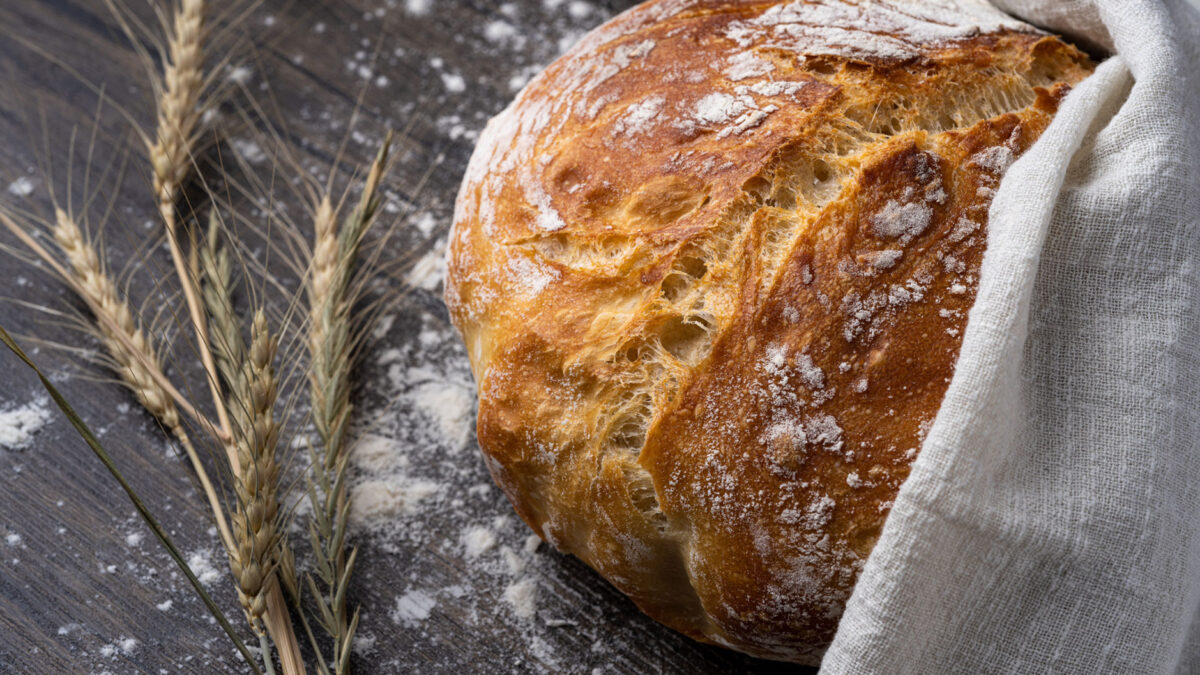While sourdough has gained popularity over the last few years, bakers have used it for thousands of years. Today, we’re here to explore why it’s so popular and share expert tips from a baker right here at Ingleside at King Farm(IKF) who has been making sourdough for over 15 years.
It’s a Loaf Story

Sourdough may be timeless, but its popularity has risen (pun intended) in recent years as more home bakers embark on their own “sourdough journey.” From growing a starter to feeding it daily with flour and water — almost like nurturing a houseplant — this style of baking requires patience, care, and a little bit of love. It’s not always easy, but the reward is oh-so-worth it.
Trends in home cooking and attention to whole ingredients have driven popularity, especially during 2020, when people turned to slow, rewarding cooking projects because many folks had more time on their hands during the pandemic. Even Taylor Swift has caught the bug, admitting on a recent podcast that “sourdough has taken over my life.” So, whether you’re new to the loaf life or a seasoned baker, we’re here to share tips, tricks, and recipes to help your sourdough story rise beautifully.
Why Sourdough Is Secretly Good for You
Sourdough isn’t just delicious – it carries health benefits by the lower glycemic index of the bread, removing the sometimes-sharp blood sugar spike caused by yeasted breads.
The Science Behind the Bread
- Unlike breads made with commercial yeast, sourdough relies on a natural fermentation process using wild yeast and beneficial bacteria.
- This slow fermentation breaks down gluten and phytic acid, which can make the bread easier to digest and improve nutrient absorption.
- The lactic acid produced during fermentation also gives sourdough its signature tangy taste and helps preserve the bread naturally.
Expert Sourdough Baking Tips You’ll Actually Use
Sourdough is a trial-and-error kind of baking, and IKF resident Jay Bassin has been perfecting his baking skills for many years. From Jay’s background in physical science, he brings tips based in science to the kitchen.
Jay’s Sourdough Science
- Sourdough, or sourdough starter, is a community of acid-tolerant yeast, and acid-producing Lactobacilli bacteria. They work symbiotically in the presence of warm water.
- Lactobacilli provides the sourness and the yeast, which consume the bacteria, produce the carbon dioxide gas that leaves the dough. Lactobacilli produce lactic acid, which provides flavor, and (over a longer period) acetic acid, which gives the sourdough its tang.
- Fermenting at room temperature favors the production of lactic acid and a milder-flavored bread, while longer, cold fermentation favors acetic acid and a stronger flavor.
Jay’s Sourdough Baking Tips
- Getting Started
“Sourdough starter is easy to make and easier to maintain, but an it can take weeks to develop a ripe sourdough from scratch. Beg some ripe starter from a friend and feed it for a week before using. My sourdough starter is almost 8 years old,” says Jay. - Feed Your Starter in Advance
A few days before baking, take your starter out of the fridge and feed it once a day to reactivate it. A healthy, bubbly starter is key to good sourdough. - Reviving Your Starter
When you’re not baking regularly, it’s perfectly fine to store your sourdough starter in the fridge to slow down its activity and avoid daily feedings. Over time, you might notice a thin white crust forming on top — don’t worry, it’s harmless. Just stir it back in when you’re ready to feed. However, if you see any dark or black spots, it’s best to scrape off the top layer and keep only the clean starter underneath. Feed that portion, and you can continue baking without needing to start over from scratch. - Hydrate Before You Knead
Before you start kneading, mix the flour, starter, and water together and let the dough rest. This allows the grains to fully absorb the water, improving the dough’s texture and elasticity. Add the salt after this resting period, and begin kneading your dough. - All-Purpose Baking Tips
“Ingredients such as flour, measured by volume, usually weigh differently depending on how the cook scoops out the flour and may not match the original recipe.” Jay also mentioned, “different ratios of baking ingredients—flour, grains and meal, yeast, salt, sugar, eggs, fats, water and milk, and leaveners—will not only affect taste but also how the dough rises and bakes.”
Join Our Sourdough Community; The Inglebakers!
Feeling inspired? Come support the “Inglebakers” by visiting the Ingleside at King Farm Bazaar on November 5 -7 from 10 am – 2 pm, where bakers from our community and Ingleside staff sell baked goods and homemade artwork to benefit the Westminster Ingleside Foundation’s Resident Supporting Fund and Employee Scholarship fund.
Fall-Inspired Sourdough Recipes to Try Right Now
Looking forward to fall? Download one of Jay’s favorite autumn recipes!

